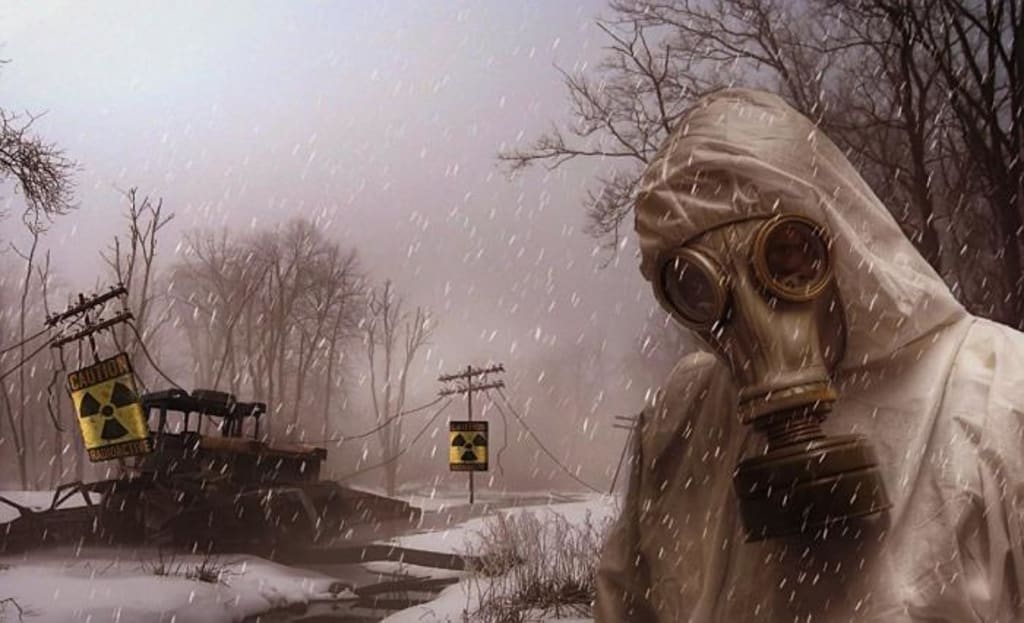New study: U.S.-Russian nuclear war would kill 5 billion people and cause global famine
The destructive power of nuclear war

According to a new study published in the leading scientific journal Nature Food [1], in the event of a nuclear war between the United States and Russia, a global famine would be triggered, resulting in the death of more than 5 billion people.
The famous physicist Albert Einstein once said, "I am not sure what weapons will be used in World War III, but World War IV will be fought with sticks and stones." Einstein was acutely aware of how catastrophic a nuclear war would be for humanity around the world.
From special relativity, Einstein derived the mass-energy equation E=MC^2, which later became world-famous, because the speed of light c (nearly 300,000 km/s) is a very large number, and after squaring it becomes even larger, so even a small atomic nucleus will be extremely large if the energy in it can be released.
Under certain conditions, heavy atomic nuclei such as uranium and plutonium undergo nuclear fission reactions, and there is a loss of mass before and after the reaction, and this mass is converted into huge amounts of energy. Based on such a principle, mankind has created atomic bombs, which usually have a yield of tens of thousands of tons of TNT.
There is an upper limit to the atomic bomb's yield, because the heavy elements used to make the bomb have a critical mass, and too many of them gathered together will automatically undergo a nuclear fission reaction. Currently, the world's largest atomic bomb (pure fission bomb) is the U.S. Mark 18 (Mark 18), with a yield of 500,000 tons of TNT.
Based on the atomic bomb, mankind has developed a much more powerful hydrogen bomb with a much higher yield. When hydrogen nuclei collide with each other and fuse, heavier nuclei will be produced, and such fusion reactions are much more efficient than nuclear fission, which is the source of energy for the stars, including the Sun. There is no theoretical upper limit to the yield of hydrogen bombs, and the largest hydrogen bomb ever exploded in the world was the Soviet Thar Bombay, with a yield of 50 million tons of TNT.

Whether atomic bombs, hydrogen bombs, or other nuclear bombs, when they explode, they will produce extreme heat and shock waves, causing enormous damage, as well as intense nuclear radiation, which can directly kill people near the nuclear explosion.
To make matters worse, nuclear explosions also produce large amounts of smoke and dust, which are sent into the stratosphere and spread around the world with atmospheric circulation. Once there is too much smoke and dust, it will cover the sky, causing global cooling, a "nuclear winter", triggering global climate change, ecosystems suffered a fatal blow.
Events like the "nuclear winter" have happened before, but the cause was not a nuclear war, but a volcanic eruption, for example, the 1815 eruption of Indonesia's Rambo volcano, which directly caused 71,000 deaths. This eruption, which ejected 100 billion cubic meters of ash into the atmosphere, led to a "year without summer" the following year, global climate anomalies, and severe famine in many parts of the northern hemisphere.
The study of the "nuclear winter" is of great importance, considering that mankind now has a major weapon at its disposal to destroy the Earth's ecosystem. In this new study, scientists build models to simulate how six different scales of nuclear war would affect the global food system.
Currently, the global nuclear arsenal is estimated to contain more than 13,000 nuclear weapons. Consider the smallest nuclear war, for example, if a nuclear war between India and Pakistan were to drop 100 15,000-ton TNT-equivalent bombs, they would explode and eject 5 million tons of smoke into the atmosphere.
Even such a small-scale nuclear war would cause enormous damage. Researchers estimate that about 27 million people would die from a nuclear explosion. The dramatic climate change caused by a "nuclear winter" would lead to a dramatic reduction in food production, and more than 250 million people would face famine in the second year after the war.
Consider the largest nuclear war, between the United States and Russia, in which 4,400 100,000 tons of TNT would be dropped, generating up to 100 million tons of smoke and dust. In this scenario, a nuclear explosion would directly kill 360 million people.
More seriously, a nuclear war on the largest scale would cause a severe "nuclear winter," resulting in a global temperature plunge and a mini ice age. Within three to four years of such a nuclear war, the average global crop heat production would drop by about 90 percent. Seventy-five percent of the world's 8 billion people would face famine within two years, resulting in the deaths of more than 5 billion people.
The study's first author, Professor Lilia Xian of Rutgers University in New Jersey, said, "The data tell us one thing, we have to stop the nuclear war from happening."
In reality, the only country that has been bombed by atomic bombs in war is Japan. Back then, the United States dropped one atomic bomb each on Hiroshima and Nagasaki, Japan, with a yield of 15,000 to 20,000 tons of TNT, resulting in tens of thousands of direct deaths from nuclear explosions in both cities, and tens of thousands more died later from cancer caused by nuclear radiation.
At the beginning of the Cold War in the last century, the University of Chicago set up the Doomsday Clock to remind the world how close it was to destruction, and the closer it was to midnight zero hour, the closer the world was to the end. Since its inception, the hands of the Doomsday Clock have hovered just minutes before midnight.
Since 2020, the hands of the Doomsday Clock have been dialed to just 100 seconds from midnight and have remained in that state for two years now, the closest the Doomsday Clock has been to midnight in the last few decades. Of course, this doesn't mean that the end of the world is imminent, but it does serve as a wake-up call to humanity that the world needs to face up to and address those dangerous elements.
About the Creator
Apostolakis
To make scientific, diligence is the mother of success






Comments
There are no comments for this story
Be the first to respond and start the conversation.